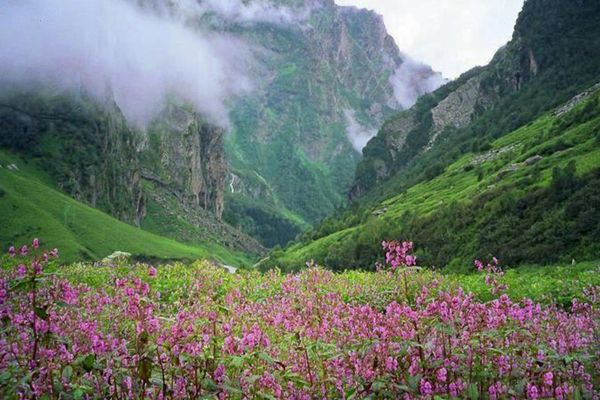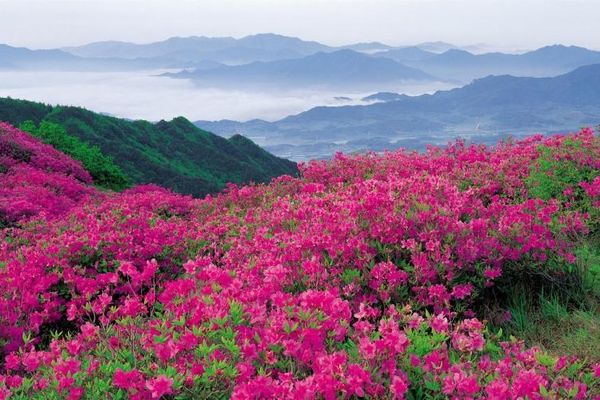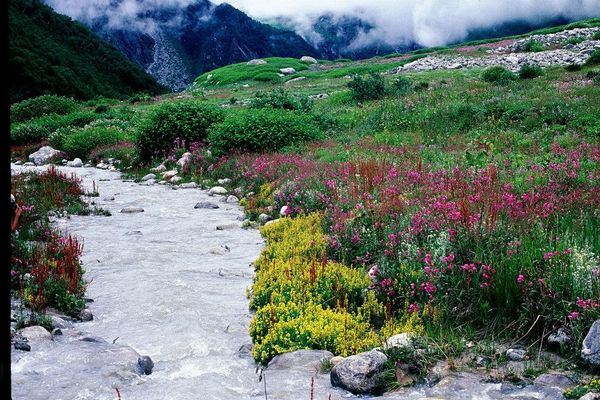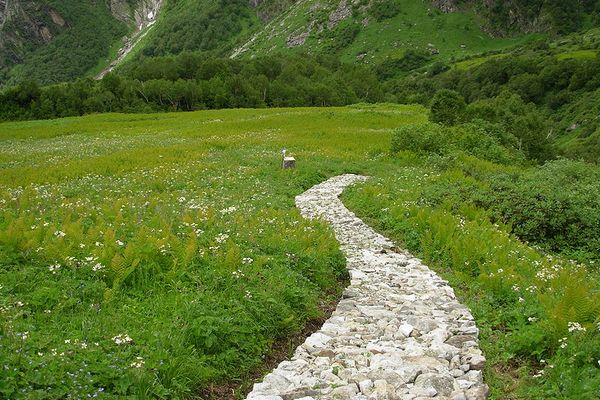Valley of Flowers
It was in 1931 that Frank Smythe and Holds worth stumbled on the valley while returning from their successful Kamet expedition. There were “at once transported from a region of solemn austerity to a fairyland of dainty flowers, most of them dwarf, but brilliant in colour”. Bustling with beautiful, lively and vibrant colours, this park spread over an area of 87.5 sq. kms. It has the largest collection of wild flower species.
Valley of flowers is situated Uttrakhand, India District Chamoli and nearest town Ghangharia, after Joshimath.
Valley of Flowers National Park is an Indian national park, located in West Himalaya, in the state of Uttarakhand and is known for its meadows of endemic alpine flowers and the variety of flora. This richly diverse area is also home to rare and endangered animals, including the Asiatic black bear, snow leopard, musk deer, brown bear, red fox, and blue sheep. Birds found in the park include Himalayan monal pheasant and other high altitude birds.

The Valley of Flowers is a high-altitude Himalayan valley that has long been acknowledged by renowned mountaineers, botanists, and in literature. It has been recognized internationally for over a century and is referenced in the Hindu religion. Local people have visited the valley since ancient times. Indian yogis are known to have visited the valley for meditation. The Valley of Flowers has many different colourful flowers, taking on various shades of colours as time progressed. The valley was declared a national park in 1982 and now it is a World Heritage Site.
As though created by nature itself, the beauty of the park is enhance by the Pushpawati river flowing in the vicinity overlooked by towering Rataban peak in the background. More than 300 species of wild flowers bloom and swing with life during the monsoons. Also inhabiting the place is the amazing variety of Himalayan butterflies. Hidden from the probing eyes of civilization, this valley had been known to the inhabitants as the Bhyundar Valley, the playground of fairies and nymphs. Legends also associate this valley with the area from where Hanumanji of Ramayana collected “Sanjeevani” herbs to revive Lakshmana, the younger brother of Rama. The valley can be visited only during the day, and overnight stay is prohibited


The Valley is 20 km northwest of Nanda Devi National Park across the wide valley of the Bhyundar Ganga. It is one of two hanging valleys lying at the head of the Bhyundar valley, the other being the shorter Hemkund valley which runs parallel some 10 km south. It runs east-west approximately 15 km by an average of 6 km wide, in the basin of the Pushpawati river, a small tributary flowing from the Tipra glacier which descends from Gauri Parbat in the east.
The area lies on the Zanskar range of the Himalayas with the highest point in the national park being Gauri parbat at 6,719 m above sea level.
Flowers mostly orchids, poppies, primulas, marigold, daisies and anemones carpet the ground. Sub-alpine forests of birchand rhododendron cover parts of the park’s area
The best time to visit Valley of Flowers trekking depends upon your liking as the valley is for all time beautiful. If you want to see maximum number of flowers July and August is a best time, if you want to see lot of glaciers you should visit in June, to see Brahamkamal flowers at Hemkud August and September is a best time.

